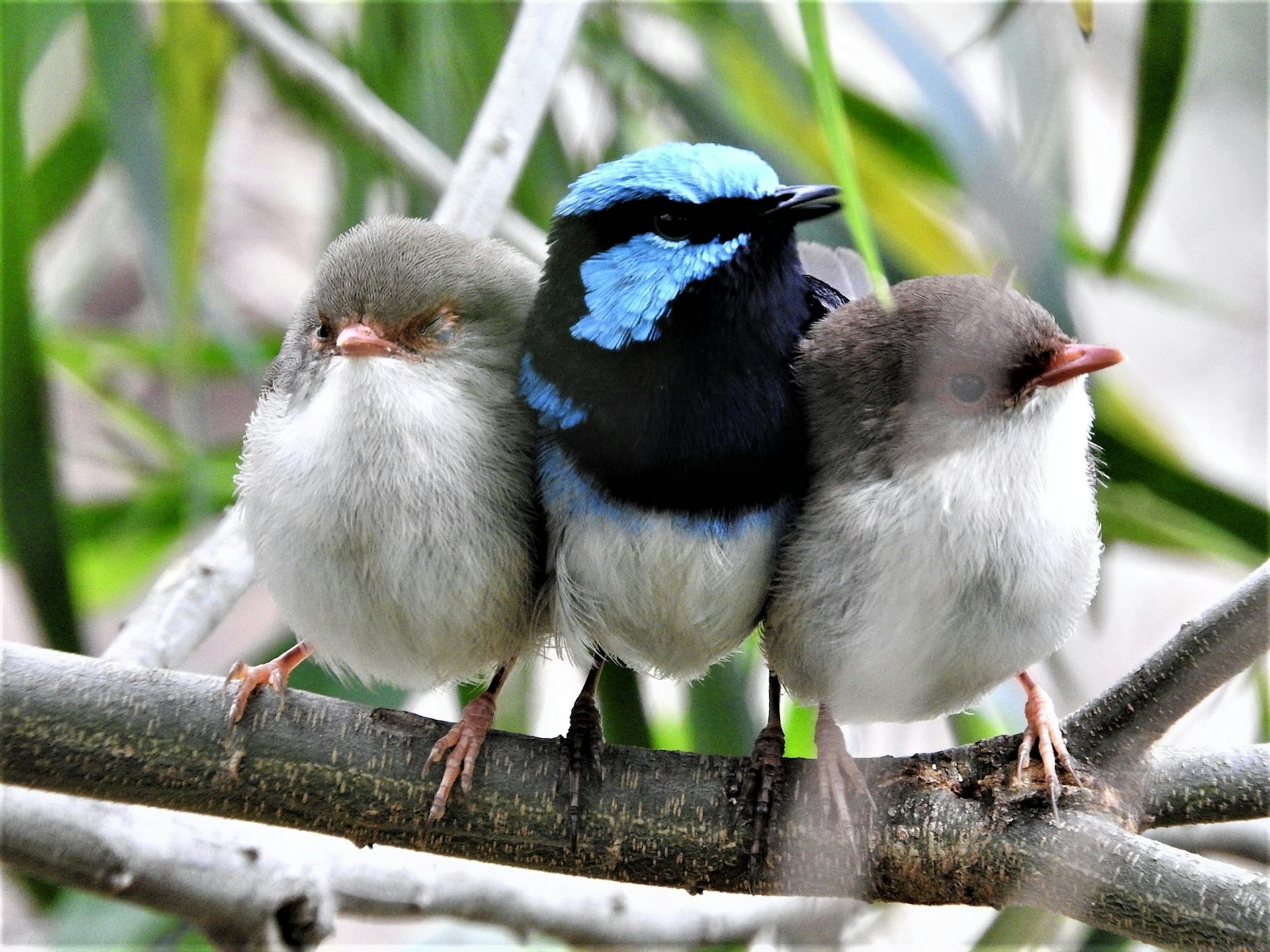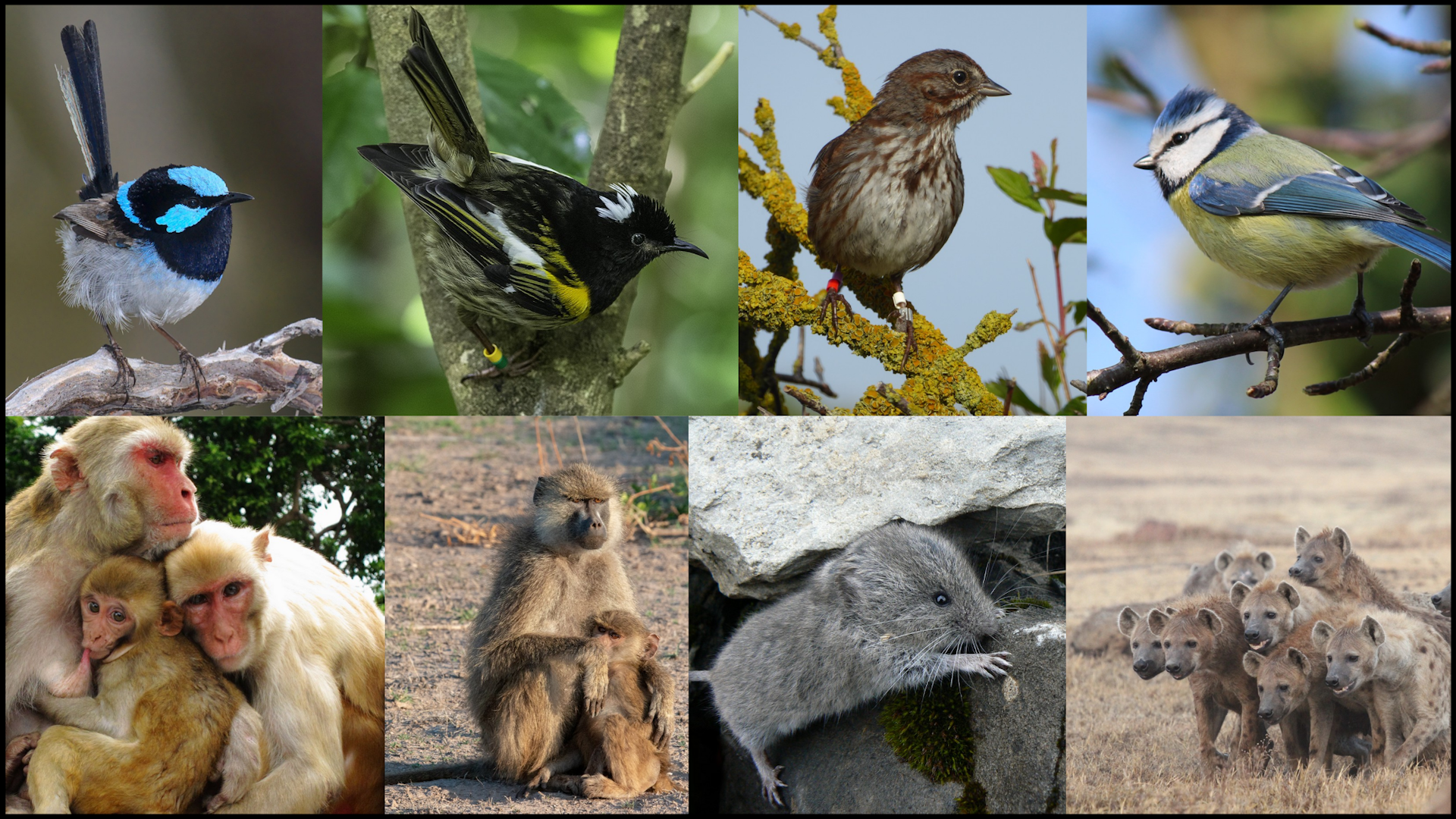Creationism in Crisis
Wild Animals Are Evolving Faster Than Anybody Thought
Wild Animals Are Evolving Faster Than Anybody Thought
Eurasian blue tit, Cyanistes caeruleus
Source: Wikipedia (CC BY 2.0)
Wild animals are evolving faster than anybody thought
In a paper published in Science last May, a team of research biologists led by Timothée Bonnet of the Australian National University presented evidence that should create consternation and anguish amongst Creationist frauds intent on convincing their cult members that the Theory of Evolution is somehow in crisis and being increasingly rejected by research biologists in favour of their childish origin myth. It reports the finding that evolution is proceeding even faster than anyone previously thought.
Of course, the definition they used for evolution is the standard scientific one of change in allele frequency over time, not the absurd Creationist notion that it means one species suddenly changing into another, or even organisms changing into humans via a few 'intermediate species'.
One of the studies, on great tits, was carried out just a stones throw from where I live, in Wytham Wood, near Oxford, one of the most intensively studied areas of woodland in the world, belonging as it does to Oxford University. The research and its significance were reported in an article in The Conversation written by lead author, Timothée Bonnet, researcher in evolutionary biology (DECRA fellow), Australian National University. The article is reprinted here under a Creative Commons licence. It is reformatted for stylistic consistency.

Wild animals are evolving faster than anybody thought

Superb fairy wren, Malurus cyaneus
Credit: Shutterstock
How fast is evolution? In adaptive evolution, natural selection causes genetic changes in traits that favour the survival and reproduction of individual organisms.
Although Charles Darwin thought the process occurred over geological timescales, we have seen examples of dramatic adaptive evolution over only a handful of generations. The peppered moth changed colour in response to air pollution, poaching has driven some elephants to lose their tusks and fish have evolved resistance to toxic chemicals.
However, it is still hard to tell how fast adaptive evolution is currently occurring. We also don’t know whether it has a hand in the fate of populations challenged by environmental change.
To measure the speed of adaptive evolution in the wild, we studied 19 populations of birds and mammals over several decades. We found they were evolving at twice to four times the speed suggested by earlier work. This shows adaptive evolution may play an important role in how the traits and populations of wild animals change over relatively short periods of time.
The tools of the evolutionary biologist: maths and binoculars
How do we measure how fast adaptive evolution is occurring? According to the “fundamental theorem of natural selection”, the amount of genetic difference in “fitness” to survive and reproduce among individuals across a population also corresponds to the population’s rate of adaptive evolution.
The “fundamental theorem” has been known for 90 years, but it has been difficult to apply in practice. Attempts to use the theorem in wild populations have been rare, and are plagued by statistical problems.

We studied adaptive evolution in several species, including the superb fairy-wren, hihi, song sparrow, blue tit, rhesus macaque, yellow baboon, snow vole and spotted hyena.
Credit: Timothée Bonnet, Geoff Beals, Pirmin Nietlisbach, Ashley Latimer, Lauren Brent, Fernando Campos, Oliver Höner, Author provided
Together, those data represent around 250,000 animals and 2.6 million hours of field work. The investment may look outrageous, but the data have already been used in thousands of scientific studies and will be used again.
Statistics to the rescue
We then used quantitative genetic models to apply the “fundamental theorem” to each population. Instead of keeping track of changes in every gene, quantitative genetics uses statistics to capture the net effect emerging from changes in thousands of genes.
We also developed a new statistical method that fits the data better than previous models. Our method captures two key properties of how survival and reproduction are unevenly distributed across populations in the wild.
First, most individuals die before breeding, meaning there are a lot of entries in the “zero offspring” column of the lifetime reproduction record.
Second, whereas most breeders have only a few offspring, some have a disproportionately high number, leading to an asymmetric distribution.
The rate of evolution
Among our 19 populations, we found that, on average, genetic change in response to selection was responsible for an 18.5% increase per generation in the ability of individuals to survive and reproduce.
This means offspring are on average 18.5% “better” than their parents. To put it another way, an average population could survive an 18.5% deterioration in the quality of its environment. (This may change if genetic response to selection is not the only force at play; more on that below.)
Given these rates, we found adaptive evolution could explain most recent changes in wild animal traits (such as size or reproductive timing). Other mechanisms are important too, but this is strong evidence evolution should be considered alongside other explanations.
An exciting result for an uncertain future
What does this mean for the future? At a time when natural environments are changing dramatically all over the world, due to climate change and other forces, will evolution help animals adapt?
Unfortunately, that is where things get tricky. Our research estimated only genetic changes due to natural selection, but in the context of climate change there are other forces at play.
First, there are other evolutionary forces (such as mutations, random chance and migration).
Second, the environmental change itself is likely a more important driver of population demographics than genetic change. If the environment keeps deteriorating, theory tells us that adaptive evolution will generally be unable to fully compensate.
Finally, adaptive evolution can itself change the environment experienced by future generations. In particular, when individuals compete with each other for a resource (such as food, territory or mates), any genetic improvement will lead to more competition in the population.
Our work alone is insufficient to draw predictions. However, it shows that evolution cannot be discounted if we want to accurately predict the near future of animal populations.
Despite the practical challenges, we are thrilled to witness Darwinian evolution, a process once thought exceedingly slow, acting observably in our lifetimes.
Timothée Bonnet, Researcher in evolutionary biology (DECRA fellow), Australian National University
AbstractNo sign there then of a theory in Crisis. In fact, it seems to be alive and well and providing serious biologists with an explanation of everything they observe, and they don't need to redefine it every time they are presented with difficult facts.
The rate of adaptive evolution, the contribution of selection to genetic changes that increase mean fitness, is determined by the additive genetic variance in individual relative fitness. To date, there are few robust estimates of this parameter for natural populations, and it is therefore unclear whether adaptive evolution can play a meaningful role in short-term population dynamics. We developed and applied quantitative genetic methods to long-term datasets from 19 wild bird and mammal populations and found that, while estimates vary between populations, additive genetic variance in relative fitness is often substantial and, on average, twice that of previous estimates. We show that these rates of contemporary adaptive evolution can affect population dynamics and hence that natural selection has the potential to partly mitigate effects of current environmental change.
Bonnet, Timothée; Morrissey, Michael B.; de Villemereuil, Pierre, et al (2022)
Genetic variance in fitness indicates rapid contemporary adaptive evolution in wild animals
Science; 376(6596), pp 1012-1016. DOI: 10.1126/science.abk0853
Copyright © 2022 The Authors.
Published by American Association for the Advancement of Science
Reprinted by kind permission under license #5473041304465




No comments :
Post a Comment
Obscene, threatening or obnoxious messages, preaching, abuse and spam will be removed, as will anything by known Internet trolls and stalkers, by known sock-puppet accounts and anything not connected with the post,
A claim made without evidence can be dismissed without evidence. Remember: your opinion is not an established fact unless corroborated.